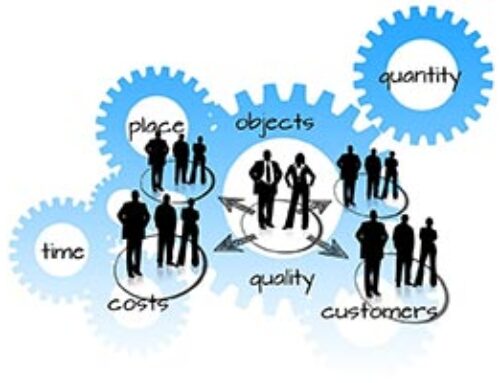 ……This Week in HealthCare
……This Week in HealthCare
By Fred Binczewski | MHA fredb@uprisecg.com | Click Here to download this article (pdf).
March 1, 2021
Veterans Administration and Healthcare Management- Marching Forward
In this issue of …This Week in HealthCare, we draw our attention and our heartfelt thanks and admiration for all our military service individuals around the globe. Just like the rest of our population, United States Veterans who have served in peace and war come home to in some cases, a disconnected VA patient experience that has left a frailty and fragile environment for the individual patient, department and provider services. For these reasons, let’s now look at some of the healthcare processes and system information available through the Veterans Administration for these Veterans and how it may become a much friendlier and improving healthcare customer experience for the future.
To understand the magnitude of this department and its services, here are some specific facts to keep in mind. Under the Department of Defense, the Veterans Health Administration (VHA), the largest federal purchaser of medical supplies and services, provides medical care to millions of veterans every year. To do this, it utilizes 18 regional networks to manage its 172 medical centers across the United States and territories.1 VA also provides medical services to a veteran population that is growing older and more diverse. These demographic shifts will drive changes in veterans’ needs and expectations, and require adjustments to VA medical facilities. As we will later discuss, VHA does not ensure its networks have the appropriate staff in place to effectively operate the network and to ensure medical centers are providing timely access to quality care. According to the Government Accountability Office, the VHA “ needs to develop a process for ensuring that these regional networks are functioning as intended, including clearly defining roles and responsibilities for managing and overseeing medical centers. Also, the VA is not fully assessing veterans’ changing expectations when it plans for such adjustments. Local VA planners also do not fully trust or use VA estimates on future space needs for their medical facilities.”2 The following graph shows the dynamics of VA Enrollees through 2038:
VA’s Projected Demographic Changes among VA Enrollees (FYs 2018-2038)
 3
3
In addition, let us not also forget the approximately 9.6 million beneficiaries that are also eligible for health care from DOD medical treatment facilities and TRICARE civilian providers. Along with the many structural changes inherent in a system this large, the DOD issued a plan in February for a required restructure of medical treatment facilities, which called for decreasing capability at 43 of them and closing five facilities. In addition, turnover in key medical and dental jobs, provider credentialing processes that are less than consistently accurate and a nationwide shortage of physician specialties threatens the basis for an excellent patient cycle experience for the VA.
As referenced above, there are positive measures being taken as well marching forward. One of the areas of discussion and realization is the assessment and feasibility of utilizing nearby civilian healthcare institutions and facilities in order to fill the gaps from facility closures and decrease in service capabilities at current VA centers. From a personal perspective, I have witnessed the successes and challenges from a hospital and clinic environment where capacity and staff education play key roles in providing a smooth and deliberate patient cycle for veterans and their beneficiaries. Some of the documentation, registration processes and claim processing through TRICARE are quite different. Working hand –in-hand with military installations also requires a clear and constant communication channel on both sides. Both administering and processing healthcare facility and military veterans and installations require real time scheduling and compromise at the same time. Holding seminars and attending installation and base meetings are absolutely necessary. This will guarantee a cooperative leadership and patient cycle path model on both sides.
Finally, the Department of Veteran Affairs has just recently announced a new position called Chief Veterans Experience Officer (VEO). The mission behind this position is to build a world class customer experience for all in the VA. Appointed to this role is Marine Corps and OIF Veteran John Boerstler. In his words, he describes the following:
“Our Nation has entrusted VA to honor the promise we give all those who serve in uniform: to care for those who have borne the battle. To do that, VA has to build a world class customer experience. We know this because Veterans today look much different than those of my grandfather’s generation. And the Veterans I served alongside in Iraq as a Marine Corps non-commissioned officer and those I worked with in my home state of Texas come from diverse backgrounds, families, and have unique needs.”
Boerstler goes on to further state his three strategic goals with the VA leadership regarding customer experience (CX) and employee experience (EX):
- Improve our understanding of how COVID-19 has impacted our Veterans and VA employees in order to improve CX and employee experience (EX) across all VA program areas. Measuring CX as it relates to Veterans’ trust and trust in accessing VA care (in-person, telehealth, vaccinations) at VA facilities across the country will be a top priority. VA must also understand the impact of long shifts and telework on VA employees so we can learn, design and improve CX and EX in tandem.
- Improving access to VA’s resources with equity starts with listening to the voice of the Veteran community. Our women, LGBTQ+, Native, rural and other minority Veterans require different approaches with outreach, care and service. That’s how we build trust with our Veterans, by listening and then designing tailored customer experiences and empowering VA’s public servants to meet their individual needs.
- Collaborate with our adjacent federal, state and local government agencies and nonprofit organizations to share CX and EX best design and implementation practices through VA’s Customer Experience Institute (CXI). Then we’ll collectively increase access and outcomes for Veterans and their families.4
In closing, we at ….This Week in HealthCare and Uprise Consulting Group would like to thank all our past, present and future military personnel for providing the freedom we know so well. We would also like to extend our best wishes to the new CVEO John Boerstler and his role in bringing the Veterans Administration to the forefront, marching forward and bringing continuous success and excellent care to the VA and all who serve.
Stay safe and diligent. See you all next time…….This Week in HealthCare
References
1 U.S. Government Accountability Office
2 U.S. Government Accountability Office
3 GAO 19-440
4 US Department of Veteran Affairs, VAntage Point Blog
To learn more about how we can help you with this topic or other healthcare questions please send us a message at the following: info@uprisecg.com
Uprise Consulting Group, Inc., Eliminating Denials Today, Tomorrow and into the Future.
Together, we are paving a road for the Best Patient Experience. Learn more at www.UpriseCG.com
Visit us on LinkedIn, Instagram,Twitter and Facebook





